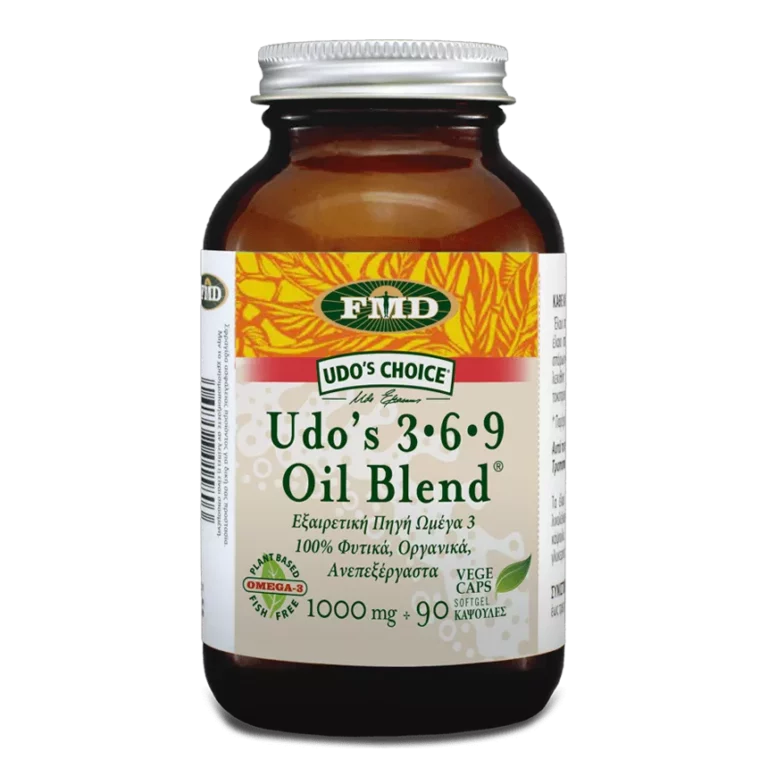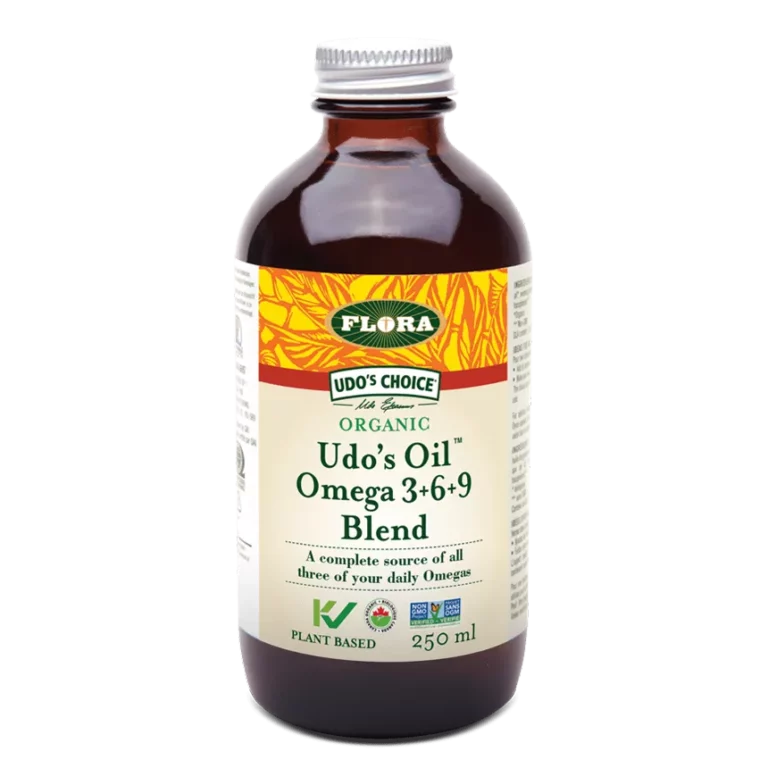Scientific Names of Sunflower Oil: Helianthus annuus L. [Fam. Asteraceae]
Forms:
Organic sunflower oil expeller-pressed in the absence of light, heat and oxygen.
Traditional Usage:
– Convalescence
– Essential Fatty Acid Deficiency
– Nutritive
Overview:
The common sunflower (Helianthus annuus L.) is an annual plant, native from Minnesota to Texas and California and also found in Central and South America. Aboriginal peoples cultivated the plant and found many uses for the plant, especially food uses for the nutritious seeds and oil. Sunflower oil is rich in linoleic acid (omega-6 Essential Fatty Acids (EFAs) – polyunsaturates), oleic acid (omega-9s – monosaturates) and Vitamin E. Sunflower oil can be used to prevent and treat EFA deficiencies in the diet. It is important to have the right balance of omega-6 and omega-3 EFAs in the diet for optimal health. Because sunflower oil contains no linolenic acid, or omega-3 EFAs, it should be combined with flaxseed oil for food and supplemental purposes in most cases. Too much omega-6 EFAs in the diet in the absence of adequate omega-3 EFAs favors the production of pro-inflammatory prostaglandins known to cause inflammation and joint pain and this can fuel the development of many serious and debilitating diseases. For instance, studies show that flaxseed oil, when given to animals exposed to toxic chemicals, prevented the formation of any abnormal growths; fish oil and evening primrose oil followed close behind and corn and safflower oils (like sunflower oil, containing only omega-6 EFA’s without any omega-3’s) were seen to stimulate the formation of abnormal growths. Studies indicate that a right fat diet, rich in both omega-6 and omega-3 EFAs and monounsaturates (oleic acid) and low in saturates, lowers serum cholesterol, promotes HDL lipid production and reduces the risk of vascular diseases. It is also important to use only certified organic expeller-pressed oils because heating oils like sunflower oil, rich in polyunsaturates, and refining them without care creates trans-fatty acids, which decrease the HDL lipids in the body.
Active Ingredients:
Sunflower oil contains: Linoleic acid (omega-6 Essential Fatty Acid) polyunsaturates (50.0 – 72.0%); oleic acid (Omega 9) monosaturates (15.0 – 35 %) and saturated fatty acids (11%); Palmitic acid (4.0 – 9.0 %); Palmitoleic acid max. 1.0%; Stearic acid (1.0 – 7.0%); Linolenic acid (Omega 3) max. 2.0%; Arachidic acid max. 1.0%; Behenic acid max. 2.0%; Other fatty acids max. 2.0%; and free fatty acids as oleic acid (0.08%).
Suggested Amount:
Take one to two tablespoons of oils rich in essential fatty acids per day. It is best to take sunflower oil blended with flaxseed oil rich in omega-3 EFAs in order to have an EFA-balanced oil for the diet. Sunflower oil can be used to make pleasant tasting culinary oils for salad dressings and other foods.
Drug Interactions:
None known.
Contraindications:
None known.
Side Effects:
Sunflower oil, taken as a part of a well balanced diet, does not cause any side effects. However, researchers now understand that an excess of omega-6 EFA’s in the
diet increases the incidence of cardiovascular diseases, hypertension, non-insulin-dependent diabetes mellitus and obesity. All of these diseases are associated with hyperinsulinemia (HI) and insulin resistance (IR) and are grouped together as the insulin resistance syndrome or syndrome X. There is also an increased cancer incidence and mortality rate, especially in women. Researchers conclude that, “high omega-6 linoleic acid consumption might aggravate HI and IR; such diets, rather than being beneficial, may have some long-term side effects within the cluster of hyperinsulinemia, atherosclerosis and tumorigenesis”. Excesses of omega-6 EFA’s also promote high blood levels of estradiol. High circulating estrogen levels in the blood tend to increase insulin levels and this reduces blood sugar. Low blood sugar leads to irritability and this is one of the main problems with PMS. Thus, excess omega-6 EFA in the diet is linked to estrogen dominance, hyperinsulinemia, PMS and many other diseases.
References:
Bibus, DM, Stitt, PA and RT Holman 1998. Ratios of Linoleic and Alpha Linolenic Acids in the Diet: Implications in the Health of Humans and Companion Animals. (Hormel Institute and University of Minnesota). Proc. of the 57th Flax Institute of the USA, March 26-28, 1998, Doublewood Inn, Fargo, North Dakota. J.F. Carter, ed. North Dakota State Univ., Fargo, ND pp. 49-58.
Duke, J. 1997: The Green Pharmacy, The Ultimate Compendium of Natural Remedies from the World’s Foremost Authority on Healing and Herbs. pp. 342; 424. Rodale Press.
Erasmus, U. 1993: Fats that Heal, Fats that Kill. Published by Alive Books, Burnaby, B.C., Canada. pp. 1-456.
Kushi, L.H. 1992. Dietary Fat and postmenopausal breast cancer. Journal of the National Cancer Institute 84(14): 1092-99.
Yam, Eliraz and Berry 1996: Diet and disease – the Israeli paradox: possible dangers of a high omega-6 polyunsaturated fatty acid diet. Israel Journal of Medical Sciences 2(11): 1134-43.






